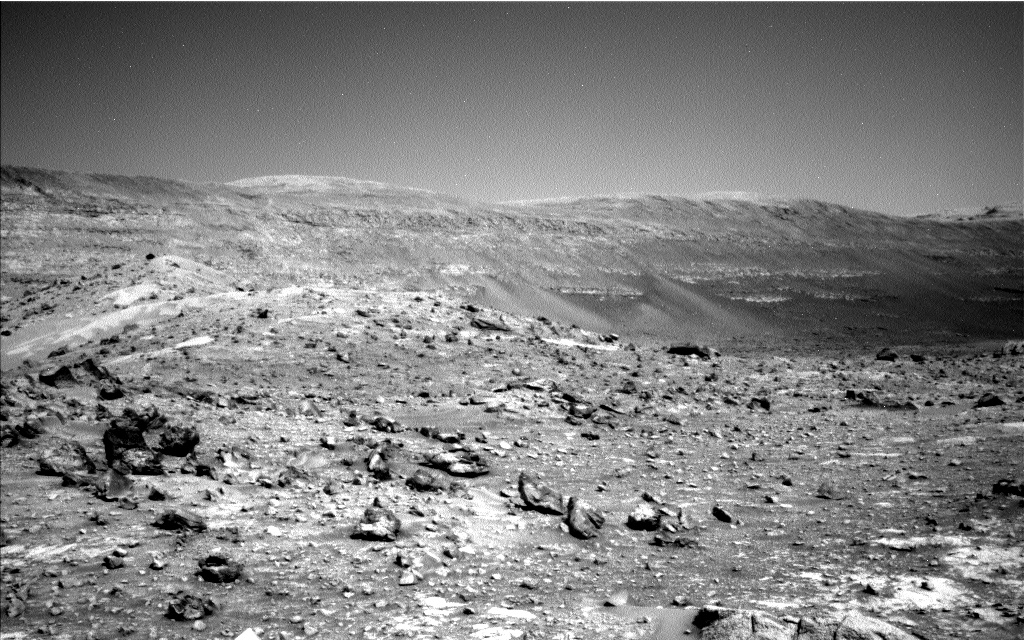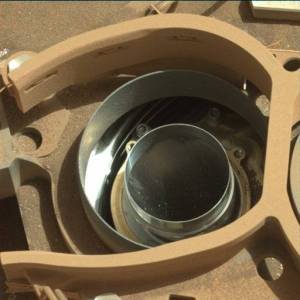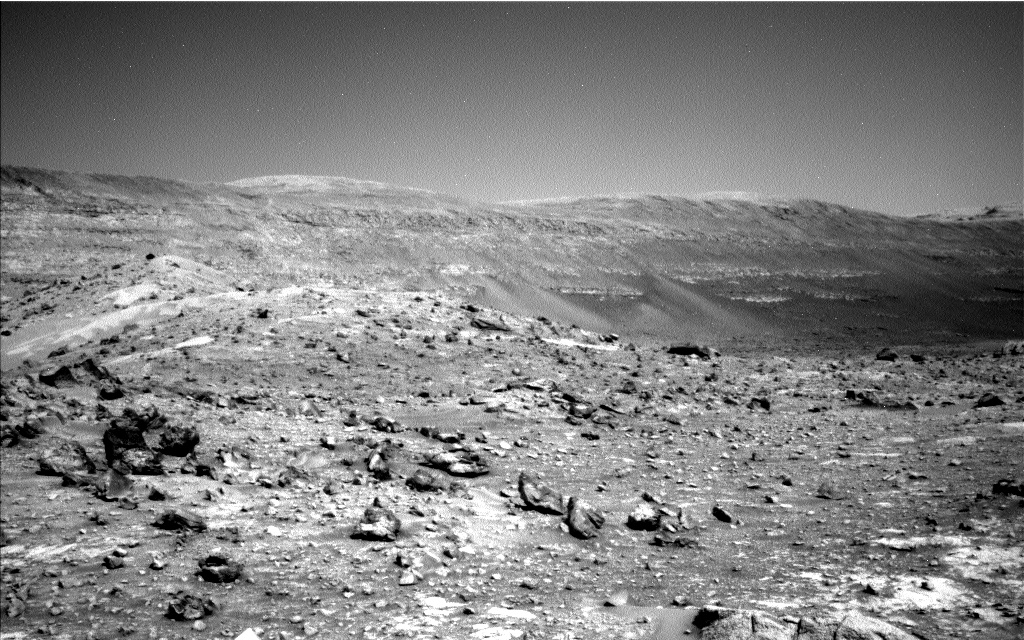Curiosity Navigation Curiosity Home Mission Overview Where is Curiosity? Mission Updates Science Overview Instruments Highlights Exploration Goals News and Features Multimedia Curiosity Raw Images Images Videos Audio More Resources Mars Missions Mars Sample Return Mars Perseverance Rover Mars Curiosity Rover MAVEN Mars Reconnaissance Orbiter Mars Odyssey More Mars Missions The Solar System The Sun Mercury Venus Earth The Moon Mars Jupiter Saturn Uranus Neptune Pluto & Dwarf Planets Asteroids, Comets & Meteors The Kuiper Belt The Oort Cloud 4 min read
Sols 4277-4279: Getting Ready To Say Goodbye to the King!  Left navigation camera image from Sol 4255, showing “Milestone Peak” on the left, the subject of an RMI in this plan NASA/JPL-Caltech Earth planning date: Friday, Aug. 16, 2024
Left navigation camera image from Sol 4255, showing “Milestone Peak” on the left, the subject of an RMI in this plan NASA/JPL-Caltech Earth planning date: Friday, Aug. 16, 2024
It’s time to move on from our “Kings Canyon” drill site, so today’s plan focused on our usual tidy up routine after a drill campaign. First we need to dump out any material in the drill chambers, in an action called “RAGE” – this sounds aggressive but stands for “Rotation to Agitate Granules for Expulsion,” so it’s more of a gentle turning than an angry shaking. This ensures that the drill chambers won’t spill later and we are ready for the next drill campaign – whenever we find a worthy target! Mastcam will document the entire process, and then image the drill bit that was used, making sure it is still in good condition.
At that point, we are free to use the arm instruments again (no turret movements allowed while there is sample in the drill chamber). So our contact science focuses today on the drill tailings, the pile of ground up rock generated by the drill action. That pile has been sitting there for over two weeks, but luckily it’s not too windy right now and the pile remained more or less intact. MAHLI will image the drill hole and the tailings pile on the first afternoon, APXS will integrate on the tailings on the first night and then MAHLI will image the tailings again on the second day. This post-retract image is just to confirm that APXS did not hit the pile of loose drill fines. As APXS Science Planner today, I worked with RPs to pick out the spot we will focus on and to make sure that we are using the correct sequences to ensure safety of the instrument – but it’s always nice to confirm that we didn’t hit the pile!
ChemCam has a suite of activities, from LIBS activities close to the rover, to “passive” (non destructive) activities and RMI images (which can be relatively near field or long distance). LIBS on the bedrock target “Marck Lake” will be used to compared with the nearby Kings Canyon target and assess homogeneity across the drill block, while the passive observation of “Red Slate Mountain” will examine a large light toned block about 10 metres away from the rover. ChemCam will also acquire a long distance RMI of loose blocks and boulders about 85 metres away, looking towards “Milestone Peak” (shown in the accompanying image).
APXS will acquire an overnight “atmospheric” measurement, looking at levels of argon as part of an ongoing campaign. This is paired with ChemCam’s second passive measurement, this time of the sky. We also have monitoring of dust levels, with Mastcam taus of the atmosphere (which atmospheric scientist Alex Innanen talked about here), and a whole host of Navcam dust devil movies, and suprahorizon and zenith movies (which target different parts of the horizon). All of these … and DAN and REMS activities too – our environmental monitoring team is working hard as usual!
ChemCam has spent the last two weeks or so getting LIBS and passive measurements on “Sam Mack Meadow” – an area of darker toned, sometimes broken up rocks just outside of the current workspace. In fact, ChemCam is getting LIBS on two further targets there in this plan: “Horse Creek Spire” and the somewhat nodular “Kearsarge Pinnacles.” Mastcam will image all of the LIBS targets too. There are some interesting textures here that APXS and MAHLI are keen to sample too, so our next drive is more of a bump to get close enough to allow contact science here too. We will still be able to gaze on the King (Canyon) for another while, so I guess it’s not really goodbye just yet!
Written by Catherine O’Connell-Cooper, Planetary Geologist at University of New Brunswick
Details Last Updated Aug 19, 2024 Related Terms Blogs
Keep Exploring Discover More Topics From NASA Mars
Mars is the fourth planet from the Sun, and the seventh largest. It’s the only planet we know of inhabited…

Explore this collection of Mars images, videos, resources, PDFs, and toolkits. Discover valuable content designed to inform, educate, and inspire,…

Each robotic explorer sent to the Red Planet has its own unique capabilities driven by science. Many attributes of a…

Mars Exploration: Science Goals
The key to understanding the past, present or future potential for life on Mars can be found in NASA’s four…



 2 min read Sols 4275-4276: A Familiar View
2 min read Sols 4275-4276: A Familiar View
 2 min read Sols 4273-4274: Prep Rally
2 min read Sols 4273-4274: Prep Rally
 2 min read Sols 4270-4272: Sample for SAM
2 min read Sols 4270-4272: Sample for SAM
